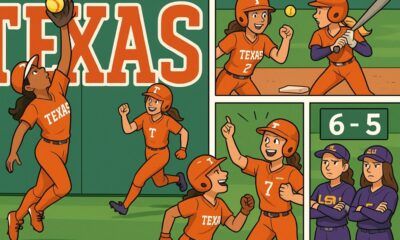
CSA Images/Getty Images
You have scheduled an appointment with a health care provider, but no matter how hard you try, no one seems to be able to reliably tell you how much that visit will cost you. Will you have to pay US$20, $1,000 – or even more?
Patients are increasingly on the hook for health care costs through deductibles, co-pays and other fees. As a result, patients are demanding credible cost information before appointments to choose where they seek care and control their budget.
Yet, in spite of recent legislation and regulations, upfront information on patient out-of-pocket costs is still difficult to obtain from both health care providers and insurers.
Predicting out-of-pocket costs
Why is it so difficult to tell patients in advance how much their care is going to cost?
This is a question health economists like me try to answer. Although the fundamental reason is simply the unpredictable nature of health care, the fact that it translates to unpredictable out-of-pocket costs for patients is a policy choice.
Health insurance plans in the U.S. such as Medicare and Medicare Advantage, as well as most individual and group plans, leave a percentage of the cost of care for patients to settle out of pocket. These include deductibles – the amount patients have to pay for a service before their insurance kicks in – or coinsurance, a percentage of the cost of care that patients must pay after they have met their deductible.
Understandably, most patients want to know their out-of-pocket costs before a doctor’s office visit or a trip to the hospital. However, the cost of care – and thus the percentage of the cost patients will pay – often isn’t available until after care has been delivered. This is because of the way health care providers are paid for their work.

DNY59/E+ via Getty Images
Health care providers typically seek payments for each patient retrospectively, based on the volume and intensity of services they have delivered. But both are hard to predict. A physician usually needs to see a patient before deciding how to address their health care needs. Sometimes, an extra test or imaging scan is needed to confirm a diagnosis or plan treatment.
Crucially, a variety of unexpected complications can occur even during routine procedures. Addressing these unforeseen complications often requires providing unanticipated services and involving other health care providers who might not have been part of the visit otherwise. And these extra services cost money.
As long as policymakers keep health care payments tied to the volume and intensity of performed medical services – which are uncertain – and patient cost-sharing tied to health care payments, patients will not be able to know what their out-of-pocket costs will be in advance. Simply making health care service prices publicly available will not change that.
What can be done to guarantee out-of-pocket costs before patients have their appointments?
Health care delivery as a supply chain
One idea researchers have proposed is to reorganize health care delivery into a supply chain. This would shift production risk to health care providers similarly to how other complex products are offered to consumers.
Consider air travel tickets. Consumers taking a flight from one city to another receive services from multiple entities, such as airlines, airports, aviation fuel suppliers and catering companies. Many of these entities face operational uncertainties such as departure delays or variable fuel consumption due to unpredictable weather. But airlines – as the final link in the supply chain – provide consumers with upfront prices for the entire trip.

In health care, the principal provider from whom a patient seeks care could serve as the price-guaranteeing entity. They would collect a single, guaranteed price for the appointment and compensate other providers involved as needed. Some researchers have proposed aspects of this idea as a potential way to reduce surprise billing from out-of-network emergency physicians working at in-network hospitals.
However, such a major reorganization of health care delivery would be extremely challenging, as it would require all providers to enter into new contractual arrangements with each other. It would not only cause a legal undertaking of unprecedented scale, but it could also end up being financially devastating for small physician practices.
Co-payment-only health plans
There are other approaches to providing patients with reliable, upfront prices that would not require a complete overhaul of the health care system. The U.S. already has much of the needed infrastructure in place: health insurance.
A primary purpose of health insurance is to protect beneficiaries from financial shocks. Health insurers could modify the benefit design of policies to ensure patients obtain guaranteed out-of-pocket cost information before receiving care.
One way to achieve that would be saying goodbye to deductibles and coinsurance and having insured patients pay for their care only in the form of co-payments – fixed dollar amounts per encounter, such as $20 per doctor’s visit, $35 per prescription drug fill or $500 per hospital stay. Some insurance plans already offer this.
However, this approach removes incentives for patients to seek care from providers that offer quality services at a low price. It also could potentially increase monthly health insurance costs, also called premiums.

skynesher/E+ via Getty Images
Innovative health insurance design
Based on my own research, I propose that an alternative solution to providing patients with reliable, upfront prices could be implementing episode-based cost-sharing into health insurance plans.
Under this model, health insurers would create bundles of services that patients may receive during a health care visit. This approach would provide patients with a single upfront price for the entire bundle based only on factors known in advance, such as their health insurance benefits and who their principal health care provider is. For example, you would have a guaranteed price tag for the cost of going to the hospital to give birth to a child or replace a joint.
Any deviation from the ultimate cost of care due to unforeseen situations patients have little control over would be borne by the insurer. That is what insurers do for a living – they know how to manage risk. Such a modification to health insurance benefit design would protect patients from unexpected health care costs, while preserving the incentive to seek care with high-value providers. It would also help keep health insurance premiums intact.
Seeking care for a health concern is already stressful. It does not have to be more stressful because of cost uncertainty. Several approaches to help patients know how much their care is going to cost in advance are available for policymakers to consider. In the meantime, patients may need to pick up the phone, call their hospital billing office and hope that the amount they obtain will be close to the amount they will eventually find on their medical bills.![]()
Michal Horný, Assistant Professor of Health Policy and Management, UMass Amherst
This article is republished from The Conversation under a Creative Commons license. Read the original article.

























































